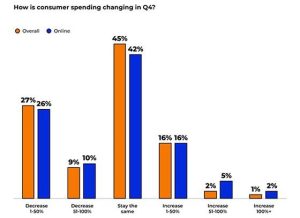How we frame any given situation that we are faced with in our life is everything. And the difference between success and failure is really determinant on our perceptions and the mindset we employ when we view the world around us.
This isn’t a new concept, but it’s one that I explored recently when I read The Art of Possibility: Transforming Professional and Personal Life by Rosamund and Benjamin Zander. If you haven’t picked up this book—I highly recommend it. The authors are an interesting pair for sure. Ben is the conductor of the Boston Philharmonic Orchestra and his wife, Roz, is a family therapist. The book was published in 2000, and while it’s not new, some of the lessons discussed are evergreen.
Lose Your Assumptions
The very first chapter in the book is entitled, “It’s all invented,” meaning that many of the problems that we face in our personal and professional lives are blown up and made bigger simply because of the inner dialogue or assumptions that we make about a situation. The book references an analogy that really sums this up. Think about this:
“A shoe factory sends two marketing scouts to a region of Africa to study the prospects for expanding the business. One sends back a telegram saying, ‘SITUATION HOPELESS STOP NO ONE WEARS SHOES.’ The other representative writes back triumphantly, ‘GLORIOUS BUSINESS OPPORTUNITY STOP THEY HAVE NO SHOES’.”
What an incredible difference in the perspectives of those two different people. The first individual looked at this situation and immediately created a problem. He constructed barriers and roadblocks based upon his initial reaction and perception of the situation—he envisioned a dead end where there wasn’t necessarily one present. The second individual, on the other hand, saw nothing but opportunity. The positive mindset he was using allowed him to at least consider the opportunities instead of simply seeing an uphill struggle like his counterpart.
Now think about this in your own life. Are you more likely to explore potential options with a positive outlook in place? Or automatically build a figurative roadblock? Does your inner dialogue speak in a positive or negative voice? Depending on your answer you could either be creating your own ladder or building your own box.
Changing the Way You Talk to Yourself
Your inner dialogue has a lot of power over the course of your life. Developing an attitude of abundance instead of a mentality of scarcity is a key factor in achieving both short- and long-term success. What do you think would happen to the way you think, feel, and live your life if you approached each day with the belief that something good was going to happen? Just envisioning that idea alone buoys the spirit and fills your heart with a sense of lightness. Now briefly consider the opposite. What type of anxiety, worry, and stress enters your being when you think negative thoughts or imagine all of the bad that is just waiting for you around the corner?
Taking that idea one step further, I would like to not only discuss the mental outlook you may have, but also how you treat yourself while in action. I read a Harvard Business Review article recently that touched upon the subject of praising your own actions, and not just belittling yourself when you get something wrong. In this piece the author recounts her time in an elementary classroom and watching the teacher’s dialogue with the students. Even when a student answered a question incorrectly, the instructor still offered some level of praise for what they did do right. Now, I’m not necessarily saying that the teacher was in the category where “everyone gets a trophy,” rather, I was intrigued by this angle. The author states, “As I left the classroom I found myself thinking about whether I treat myself the way Dorit treated her students. Am I encouraging? Do I catch myself doing things right as often as doing things wrong? And when I do something wrong, do I simply move on or do I dwell on it, haranguing myself?”
It’s true that we live in a society that focuses on critique—our addiction to social media alone is proof of our desire to ensure our opinions (on whatever subject available to us) are heard by the masses. However, admiration is oftentimes placed in a category akin to fandom and self-admiration is usually viewed as gloating or prideful. And that, I believe, is what hurts our ability to think positively about ourselves, our capabilities, and how we view the world. We are programmed, in a way, to be a critic ready to give “two thumbs down” to the situations that we encounter—and our personal and professional lives suffer because of it.
I had a conversation recently with a client who, when describing himself, said he could be characterized as “scrappy.” Listening to his self-description, I was automatically taken aback and somewhat shocked that someone would voluntarily describe themselves this way. After all, the definition of scrappy is “consisting of disorganized, untidy, or incomplete parts,” and “determined, argumentative, or pugnacious.”
And then I realized that he was using this word as a positive descriptor!
I suppose, to him, that the word scrappy, even though its definition is aggressive and negative in nature, might have been viewed as an appealing characteristic to be present in a man at his particular career level. However, I did not share that perception. There was a disconnect.
With this in mind, I encourage you to think about the ways that you would describe yourself to others. There was a helpful Inc. Magazine article that I found that encourages a person to get organized in this way by categorizing the terms you use when describing yourself—label them positive, negative, or neutral. For words that might be deemed negative, devise a neutral alternative. For a neutral word, think of a positive alternative. When considering the positive words, think of something even more positive, and introduce that term to your internal vocabulary. Doing this will allow you to begin to morph and change the way you think about yourself as well as the way that you talk to yourself.
Giving An A
Ben Zander encourages everyone to give themselves an “A”. Giving yourself an “A” requires you to think positively about your ability to reach new heights that only you can imagine. Once you frame your future as an endless amount of possibilities, you are now free to consider: What could be? What do you want? What will make your eyes shine? What will give you joy? And with your vision, you are bound to reach your goal.
As a leader, it is your responsibility to inspire and awaken potential in others. Giving a direct report or team member an ‘A’ should not be viewed as delivering a grade. Rather it is the act of transporting the relationships from a place of measurement to that of potential. Just as I noted regarding the Harvard Business Review article mentioned previously, it is necessary to offer encouragement to the people around you, just as much as you may offer it to yourself. When you engage with people through pure respect, they are provided with the ability to realize the possibility in themselves. This, in turn, generates a new vision to form—one that is built on partnership and teamwork. Giving an A has the opportunity to change behavior, and help produce great things.
Rule # 6
And finally, there is Ben Zander’s Rule # 6: Don’t take yourself so seriously. What are rules 1-5? There aren’t any.
Originally posted on JPKantor.com.
Business & Finance Articles on Business 2 Community(76)
Report Post





